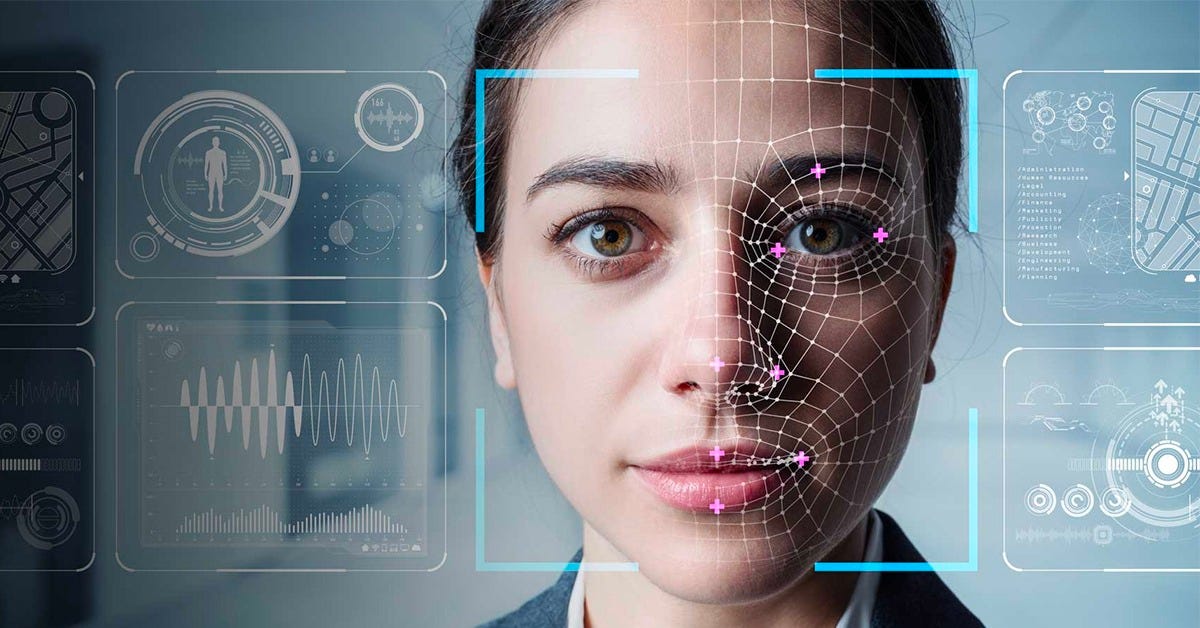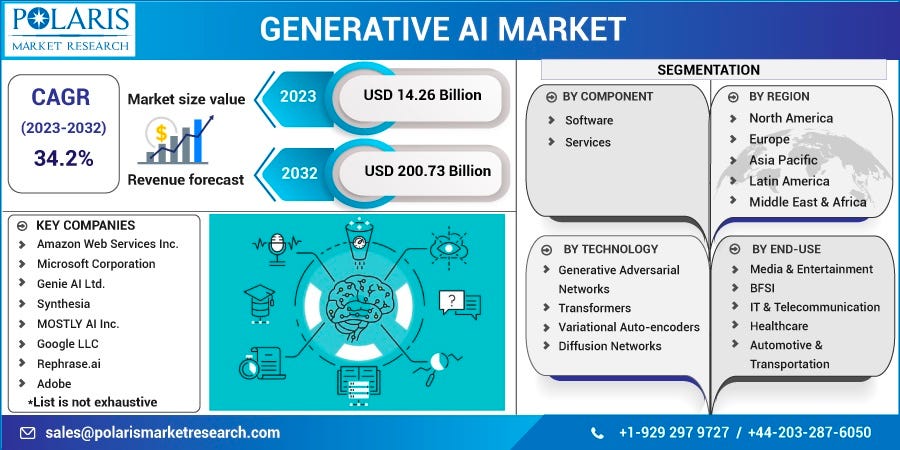Exploring the Limitations, Applications, and Ethical Concerns of Generative AI
Unlocking the Potential and Risks of AI that Generates Text, Images, Music, and Videos
Generative AI is a form of artificial intelligence (AI) in which new content or data is generated from existing content or data. It involves training algorithms to generate new, previously unseen data such as images, text, and music.
It is a class of artificial intelligence techniques that are used to create new data, images, sounds, or other forms of digital content that have never been seen before. Unlike traditional AI models that rely on training data to make predictions or classifications, generative models can create new data by learning the underlying patterns and structures in the training data.
This article explores the different types of generative AI and their applications, as well as the challenges and ethical concerns associated with their use.
Types of Generative AI
1. Text Generation: Text generation is one of the most popular applications of generative AI. This type of AI can create natural-sounding sentences, paragraphs, and even entire articles. It can be used to generate news articles, chatbot responses, and product descriptions. One of the most well-known examples of text generation is GPT-3, an AI language model developed by OpenAI.
2. Image Generation: Generative AI can also be used to create new images that have never existed before. This is achieved by training algorithms on large datasets of existing images, and then using that knowledge to generate new images. This type of AI can be used to create artwork, generate realistic avatars for video games, and even assist in medical imaging.
3. Music Generation: Generative AI can also be used to create new pieces of music. It does this by analysing existing songs and creating new pieces of music that are similar in style and composition. This type of AI can be used to compose soundtracks for movies and video games, as well as to generate personalised playlists for music streaming services.
4. Video Generation: Generative AI can also be used to generate new videos. It does this by analysing existing video footage and creating new footage that is similar in style and composition. This type of AI can be used to create virtual environments for video games and movies, as well as to assist in security and surveillance applications.
Applications of Generative AI
1. Art: Generative AI has been used to create a new genre of art called "AI art." AI artists use generative AI to create original artworks that are both unique and complex. This type of art has been featured in galleries and exhibitions around the world.
2. Video Games: Generative AI has been used in video games to create more realistic environments and characters. This type of AI can be used to generate realistic avatars, environments, and even entire game worlds. Games like No Man's Sky and Minecraft use generative AI to create vast and varied game worlds.
3. Advertising: Generative AI has been used in advertising to create personalised content for individual users. This type of AI can be used to create personalised product recommendations, ad copy, and even entire ad campaigns. Companies like Amazon and Netflix use generative AI to create personalised product recommendations for their customers.
4. Health Care: Generative AI has been used in health care to assist in medical imaging and diagnosis. This type of AI can be used to analyse medical images and identify potential health issues. It can also be used to generate personalised treatment plans for individual patients.
Challenges and Ethical Concerns
Bias: One of the biggest challenges with generative AI is bias. Since generative AI is trained on existing data, it can inherit the biases and prejudices of that data. This can lead to unfair and discriminatory outcomes, particularly in areas like health care and law enforcement.
Misinformation: Generative AI can also be used to create fake news articles and other types of misinformation. This can be used to manipulate public opinion, spread propaganda, and even interfere with elections.
Ownership: There is also a question of ownership with generative AI. Who owns the content created by generative AI? Is it the original creator of the dataset, or the creator of the generative AI algorithm? This is a question that has yet to be fully resolved.
Generative AI, like any other technology, has limitations.
Some of the limitations of generative AI are
Limited creativity: Although generative AI can produce unique and novel content, it has a limited ability to create truly original ideas. The model can only generate what it has learned from the training data, and cannot come up with new concepts or ideas that have not been previously presented to it.
Quality and Consistency: The quality of the generated content can vary greatly depending on the quality of the training data, the complexity of the task, and the design of the model. Additionally, the generated content may lack consistency, with variations in tone, style, and coherence.
Lack of Context and Common Sense: Generative AI models lack a deep understanding of the world, which can lead to content that lacks context and common sense. For example, a language model may generate a sentence that is grammatically correct but semantically nonsensical.
Bias and Stereotyping: Generative AI models can perpetuate existing biases and stereotypes present in the training data. If the training data contains biased content, the model will produce biased output.
Computationally Intensive: Training generative AI models require significant computational resources, making it expensive and time-consuming. Moreover, the models require a lot of storage space and may not be suitable for deployment on low-resource devices.
Limited Domain of Expertise: The scope of a generative AI model's expertise is limited to the data it has been trained on. The model may not be able to generate content outside its domain of expertise.
Overall, while generative AI has made significant strides in recent years, it still has limitations that must be considered in its application.
Generative AI refers to the class of AI models and algorithms that are capable of creating original content such as images, videos, text, and even music.
The benefits of generative AI are many and varied, some of which include
Creativity: Generative AI allows for the creation of unique and novel content that has never been seen before. This opens up new avenues for creative expression and enables artists and designers to explore new possibilities.
Efficiency: Generative AI can automate repetitive and time-consuming tasks such as generating realistic 3D models or creating high-quality images. This can free up human creators to focus on more complex and strategic work.
Personalisation: Generative AI can be used to personalise content for individual users, such as generating tailored product recommendations or creating custom music playlists.
Cost savings: Generative AI can help reduce the cost of creating content by automating certain tasks and reducing the need for human labour.
Speed: Generative AI can create content at a much faster pace than humans, which can be useful in industries where speed is critical, such as in the gaming industry where game assets need to be created quickly.
New business opportunities: Generative AI can create new business opportunities in industries such as fashion, art, and music, where unique and original content is highly valued.
Overall, generative AI has the potential to revolutionise many industries and enable new forms of creative expression and productivity.
Image source : googleimages
Conclusion
Generative AI refers to a class of artificial intelligence techniques used to create new data, images, sounds, or other forms of digital content that have never existed before. Unlike traditional AI models that rely on training data to make predictions or classifications, generative models can generate new data by learning the underlying patterns and structures in the training data. This has significant implications for future research and development in a variety of fields, among others:
However, there are also potential ethical and social implications of generative AI. For example, generative models can be used to create fake news, deep fakes, or other forms of disinformation, which can have harmful consequences for individuals and society. Therefore, researchers and developers must consider the ethical implications of generative AI and work to mitigate potential harm.
This article was originally published on a company weblog. You can read the original one here.
Intellicy is a consultancy firm specialising in artificial intelligence solutions for organisations seeking to unlock the full potential of their data. They provide a full suite of services, from data engineering and AI consulting to comment moderation and sentiment analysis. Intellicy’s team of experts work closely with clients to identify and measure key performance indicators (KPIs) that matter most to their business, ensuring that their solutions generate tangible results. They offer cross-industry expertise and an agile delivery framework that enables them to deliver results quickly and efficiently, often in weeks rather than months. Ultimately, Intellicy helps large enterprises transform their data operations and drive business growth through artificial intelligence and machine learning.



